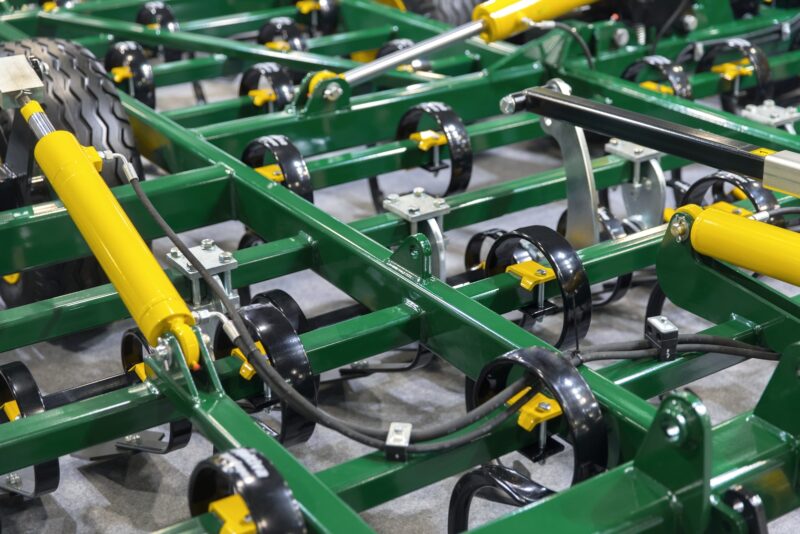Introduction to Seeding Machine Maintenance

A seeding machine is an indispensable tool for modern agriculture, enabling farmers to sow seeds with precision and efficiency. To ensure that your seeding machine operates at optimal performance, regular maintenance is essential. Maintaining the machine properly increases its dependability and lengthens its lifespan, which eventually saves you money and effort.
Understanding Your Seeding Machine
Before diving into maintenance tips, it’s crucial to understand the components and functions of your seeding machine. The main parts typically include the hopper, seed metering system, seed tubes, openers, and press wheels. Each part has a specific role in the seeding process, and any malfunction can compromise the machine’s performance.
Daily Maintenance Tips

Maintenance should be a daily routine to keep your seeding machine in top shape. Here are some daily maintenance tasks to consider:
- Check for Clogs:Inspect the seed tubes and openers for any blockages. Clogs can disrupt the seed flow and lead to uneven planting.
- Clean the Hopper:Ensure the hopper is free from dust and debris. A clean hopper prevents seed contamination and ensures accurate seed metering.
- Lubricate Moving Parts:Regularly lubricate the moving parts, such as the seed metering mechanism, to reduce friction and wear.
- Inspect for Wear and Tear:Look for signs of wear on belts, chains, and other components. Replace any worn-out parts to prevent breakdowns during operation.
Weekly Maintenance Tasks
In addition to daily checks, weekly maintenance tasks are crucial for long-term performance:
- Calibrate the Seed Meter:Accurate seed metering is vital for uniform planting. Recalibrate the seed metering system weekly to ensure consistent seed distribution.
- Check Tire Pressure:Proper tire pressure is essential for maintaining the machine’s balance and stability. Adjust the tire pressure as needed to ensure smooth operation.
- Tighten Bolts and Nuts:Vibration from the machine’s operation can loosen bolts and nuts. Inspect and tighten them weekly to avoid mechanical failures.
- Examine Electrical Systems:If your seeding machine has electronic components, check the wiring and connections for any signs of wear or damage.
Seasonal Maintenance

Seasonal maintenance prepares your seeding machine for heavy use during planting seasons and ensures it remains in good condition during the off-season.
- Thorough Cleaning:Clean the entire machine thoroughly at the end of each planting season. Remove any residual seeds, dirt, and debris that can cause rust or clogging.
- Inspect Fluid Levels:For machines with hydraulic systems, check and top up fluid levels. Refresh any necessary fluids as recommended by the manufacturer.
- Store Properly:Proper storage is critical during the off-season. Store your seeding machine in a dry, sheltered location to protect it from environmental elements like rain and UV radiation, which can cause deterioration.
Long-Term Maintenance Strategies

Maintaining your seeding machine over time might help it last much longer. Consider implementing the following strategies:
- Regular Professional Check-ups:Schedule professional inspections at least once a year. Experts can identify issues that might be overlooked during routine checks and provide specialized maintenance services.
- Follow Manufacturer’s Guidelines:Adhere to the maintenance schedule and guidelines provided by the machine’s manufacturer. These are tailored specifically for your machine’s model and are crucial for optimal performance.
- Keep a Maintenance Log:Maintain a detailed log of all service and maintenance activities. This record helps track the machine’s condition over time and plan future maintenance effectively.
Troubleshooting Common Issues
Despite regular maintenance, problems can still arise. Here’s how to troubleshoot some common issues:
- Uneven Seed Distribution:If seeds are not being distributed evenly, check the seed metering system for clogs and recalibrate if necessary.
- Machine Vibrations:Excessive vibrations can indicate loose parts or unbalanced components. Look for any worn-out or loose bolts on the machine.
- Poor Performance in Wet Conditions:Wet conditions can affect the machine’s performance. Make certain that every moving component is well-lubricated and clear of dirt and debris. If your model supports mud scrapers, consider installing them.
Conclusion: The Importance of Consistent Maintenance
Maintaining your seeding machine takes effort, but the rewards are well worth it. The optimal functioning of your machine is ensured by daily, weekly, seasonal, and long-term maintenance procedures, which improve crop yields and streamline agricultural operations. Remember, a well-maintained seeding machine is the backbone of successful planting seasons, paving the way for bountiful harvests and sustainable agriculture.
Article by Community Writer.




